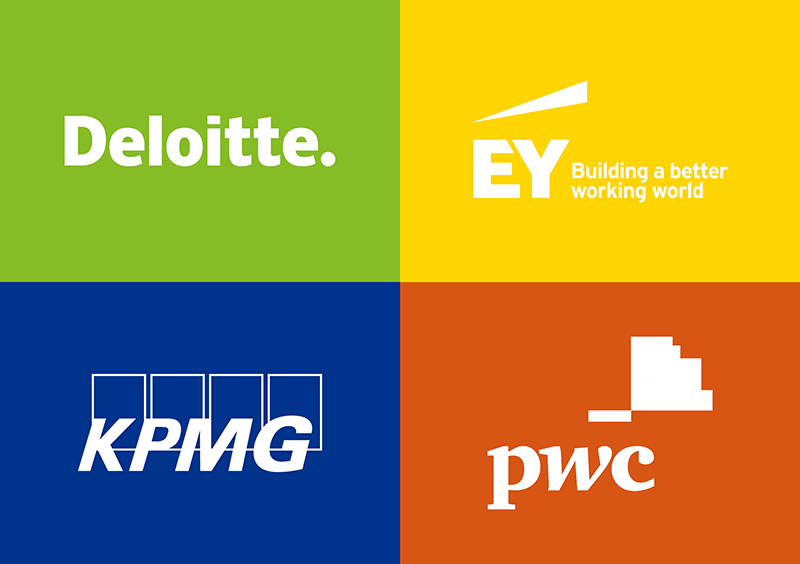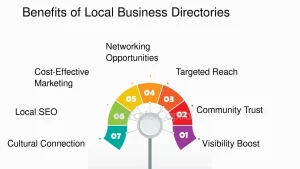The Critical Role of Employee Engagement in Accounting Firms
Engaging employees in an accounting firm is akin to firing up the engines that power the entire system.
When employees are actively engaged, it’s like having all cylinders firing — the energy is palpable, productivity soars, and profitability follows suit.
Far from being merely number crunchers, accountants play a key role in just about every aspect of business operations.
To have your highly skilled workforce motivated and invested in their work is to have a decisive advantage in the competitive landscape.

Having noticed this crucial correlation, leading firms from all around the globe have started to strive for higher employee engagement.
A recent study by Deloitte highlighted the significance of engagement by revealing that companies with highly engaged workforces outperform their peers by a whopping 147% in earnings per share.
Understanding the Importance of Workforce Investment in the Accounting Sector
When it comes to the accounting sector, the workforce is much more than just a resource or asset – it’s the backbone of the firm.
Investing in your workforce goes beyond mere financial remuneration;
it involves offering continuous professional development opportunities, creating a supportive and inclusive work environment, recognizing and appreciating effort and dedication, and fostering open lines of communication.
The returns on workforce investment in accounting firms are manifold.
Firms that prioritize employee engagement report higher job satisfaction rates, leading to increased productivity and efficiency.
A workforce that feels valued and heard is more likely to be loyal to their organization, reducing turnover rates and associated recruitment costs.
Additionally, highly engaged employees make for better ambassadors of the firm, bolstering the firm’s reputation and client relationships.
Consider, for a moment, your own organization.
What measures are in place to ensure that your employees feel truly valued and engaged?
Are their needs and aspirations considered in the firm’s decision-making processes?
Do they feel like a critical part of the team, or mere bystanders? These questions are not just pertinent but essential when considering the importance of workforce investment.

Employee engagement is not a one-time activity. It’s an ongoing process that requires consistent effort and commitment.
By actively investing in its workforce, an accounting firm not only bolsters its overall performance but also cultivates a strong, resilient organizational culture that can adapt to shifts in the market and sustain growth in the long term.
The Ripple Effect of Authentically Engaged Employees in Finance and Accounting
The dividends of authentically engaging employees in finance and accounting stretch far beyond productivity and performance.
The ripple effect creates an environment conducive to creativity, collaboration, and commitment, which collectively amplify business outcomes.
When employees feel invested in an organization and connected to their work, they put their best foot forward, not just by doing their tasks well, but by going the extra mile.
Engaged employees emanate positive energy, radiating it out into their interactions with clients and colleagues alike.
This improved interpersonal dynamic can help create a vibrant work culture that resonates with everyone, from top-tier leadership to new recruits.
With greater morale, comes lower turnover rates, making the process of grooming and retaining talent less challenging.
In a highly competitive arena like finance and accounting, these factors can provide a significant edge.
Additionally, these engaged individuals are more likely to become advocates for the firm, both internally and externally.
Internally, their enthusiasm can motivate their peers, fostering a sense of unity and collective purpose.
Externally, their ambassadorship can reflect positively on the firm’s brand image, drawing more business and talent.
The gains from genuine employee engagement are multifold, producing a ripple effect that can orchestrate a virtuous cycle of achievement and positivity in an organization.
So, accounting firms that choose to invest in their workforce authentically not just nurture their employees better, they propel their business further.
Common Pitfalls in Employee Engagement: Lessons from the Accounting Industry
In their zeal to excel, accounting firms’ usual misstep lies in failing to treat employee engagement as a two-way street.
Regrettably, many firms mistakenly believe that engagement is about extrinsic rewards or about managing employee satisfaction.

Employee engagement transcends mere contentment and ventures into empowering each employee to commit and contribute meaningfully to the company’s mission and growth.
Typically, firms overlook the requisite for open and honest communication, a cornerstone of employee engagement.
They overvalue formal, upward communication but undervalue informal, downward and lateral communication.
This oversight stifles authentic dialogue, causing employees to disengage, as they feel unheard and unappreciated.
Another common oversight is the lack of personal and professional growth opportunities.
In a fast-paced industry like accounting, firms often overlook the need for continuous learning, thereby making their highly ambitious employees feel stagnant and undervalued.
Last but not least, work-life balance is often underrated.
Working long hours seems like a staple in accounting firms, an expectation rather than an exception.
This not only leads to burnout but also creates an engagement gap, adversely affecting employees’ well-being and connection to the company.
These common pitfalls highlight the acute need for constructive change in the accounting sector to foster a more engaged, connected, and fulfilled workforce.
| Common Pitfalls in Employee Engagement | Possible Outcomes | Constructive Changes Needed |
|---|---|---|
| Lack of regular feedback | Decline in performance, decreased job satisfaction | Implement regular feedback sessions |
| Insufficient recognition and appreciation | Decreased morale, increased turnover rate | Create an inclusive recognition system |
| Limited opportunities for professional development | Stagnation in career progression, decreased motivation | Invest in professional development programs |
| Rigid work arrangements | Decreased productivity, increased burnout | Offer flexible working hours and remote working options |
| Poor communication | Reduced trust in management, lack of clarity in job roles | Improve internal communication channels |
Unearthing Employee Desires: Tools for Gaining Insight into Your Workforce’s Needs
People are at the core of any successful organization.
When employees feel valued, and their voices heard, they are more likely to be engaged and invested in their work.
Thus, it’s imperative for firms to actively try and learn what their employees truly want or need.
One of the most effective tools for gaining insight into your workforce’s needs is through employee surveys.
Whether conducted digitally or in-person, surveys give your employees an avenue to voice their needs, concerns, and suggestions.
They provide a candid, invaluable window into their experiences and expectations. However, surveys aren’t the only way to learn about your employees’ needs.
Exit interviews, focus groups, and one-on-one check-ins can also offer valuable insights.
Moreover, providing platforms for open communication can encourage employees to share their creative ideas and potential solutions to company problems.
These platforms could be regular town hall meetings, suggestion boxes, or an open door policy where individuals are encouraged to approach management with their suggestions or concerns.
Lastly, paying attention to employee behavior can disclose volumes about what they need or want.
High turnover rates, sustained disengagement, or decreased productivity are often signs of underlying issues that need to be addressed.
Being attentive and proactive in spotting these signs can help your firm anticipate and cater to your employees’ changing needs before they become bigger issues.
Remember, communication is a two-way street. Listen as much as you speak, if not more.
Leadership’s Influence on Company Culture: Setting the Tone for Employee Engagement
As strong leaders, you have a pivotal role to play in defining your firm’s culture and setting the tone for staff engagement.
Leaders aren’t just authoritative figures; they act as guides, mentors, and catalysts for change.
Your actions can inspire employees and motivate them to navigate challenges, identify ways to contribute positively to their work environment, and ultimately feel more connected to the company and its mission.
Much of the company culture springs from the behaviours exemplified by you, its leaders.
If you reflect a culture of open communication, collaboration, mutual respect, and appreciation, then these qualities will naturally reverberate through the entire organization.
Employees quickly pick up on the behavioral cues from the top and emulate those, reinforcing the culture throughout the organization.
Transforming Employee Feedback into Actionable Strategies
Let’s get this straight – feedback from employees isn’t just another box to tick off in corporate governance.
It’s a treasure trove of insights that can propel your firm forward. But how do you transform these insights into strategies that meaningfully engage your employees? It all begins with active listening.
As you gather feedback from your employees, don’t just nod and move on. Show genuine interest, validate their inputs, and make sure they feel heard.
Next, you need to analyze this feedback. Understanding common themes and patterns can help you identify specific areas for improvement.
For instance, if numerous employees express dissatisfaction with work-life balance, it’s clear that implementing flexible work arrangements should be considered as a strategy.
Once you have clear objectives based on your analysis, create detailed action plans.
These should outline each step required to achieve the respective goal, responsibilities, and timelines.
Then, communicate this action plan to your employees.
Let them know that their feedback has been taken seriously and reassure them that specific steps are being undertaken to address their concerns.
Finally, remember that change doesn’t happen overnight.
Implement your actions, monitor the outcomes and adjust your strategies as necessary.
By demonstrating that you’re invested in their well-being and success, your employees will feel more engaged and connected to your firm.
When done right, the process of transforming feedback into actionable strategies isn’t just a way to enhance employee engagement—
it becomes a driving force for continuous improvement, increased productivity, and a more fulfilled, motivated workforce.
| Feedback Categories | Actionable Strategies | Expected Outcomes |
|---|---|---|
| Work-life Balance | Introduce Flexible Work Hours | Increased Employee Satisfaction |
| Professional Growth | Create Skill Enhancement Programs | More Motivated Workforce |
| Recognition and Appreciation | Initiate Employee Reward System | Better Employee Morale |
| Communication | Train Managers for Effective Interaction | Improved Trust and Shared Understanding |
| Greater Inclusion | Promote Diversity and Inclusion Programs | More Engaged and Inclusive Workforce |
Fostering an Inclusive Environment: The Power of Employee Recognition and Appreciation
Recognizing and appreciating your employees’ efforts plays a crucial role in creating an environment where individuals feel valued and integral to the business.
This sense of value fosters a deeper connection between the employees and the firm. Let’s explore why this connection is so crucial.
When employees feel their work is acknowledged and appreciated, they’re more likely to put in extra effort and demonstrate improved performance.
According to a study by Gallup, employees who regularly receive recognition and praise increase their individual productivity, engage more with colleagues, and stay longer with their company.
Employing a structured recognition program encourages a culture that celebrates the individual and team achievements.
Not only does this boost morale by giving due credit, but also it promotes a competitive zeal among peers to work harder and achieve more.
It’s vital, however, that the recognition is genuine, timely, and specific to truly make a difference.
Beyond recognition, showing appreciation on a regular basis can be highly effective. Simple acts like a ‘thank you’ email, an acknowledgment in a team meeting, or offering additional support during high-pressure periods can go a long way.
The impact of these gestures often transcends beyond individual employees, creating a ripple effect that promotes a positive and inclusive workplace culture.
Finally, it’s key to remember that providing recognition and appreciation must be woven into the day-to-day operations of a firm, rather than being an occasional feat.
After all, employees thrive in environments where respect and acknowledgment of their contributions are a part of the company’s core values.
The Power of Professional Development: Boosting Employee Engagement through Skill Enhancement
The journey of strengthening employees’ bond with their work and the company often starts with professional development.
Offering employees opportunities to develop their skills not only enhances their performance, but it also communicates the company’s commitment to their growth and progress.
Imagine if you could give your team members the chance to master new skills, technique or tool – the excitement and renewed energy this could inject into their day-to-day activities!
Such is the transformative power of professional development. It adds a layer of personal growth to the professional landscape, giving employees tangible growth and amplifying their engagement levels.
Accounting firms, given their knowledge-intensive ecosystem, stand to gain particularly from such an approach of employee engagement. Employees in these firms often crave the chance to innovate, learn and grow.
By providing structured pathways for upskilling, firms can unleash employees’ potential and make them feel valued at the same time.
From regular training sessions to sponsoring employees for relevant courses and certifications, there are endless ways to tap into the power of professional development.
Online platforms also offer highly flexible and personalized learning experiences that can help employees upgrade their skills at their own pace.
Remember, the prime goal of professional development is not just to upgrade the employees’ skill set but also to foster an environment of continuous learning and growth.
This is an effective way of making employees feel that they are an integral part of the firm and their contribution is truly valued.
Promoting a culture of learning and professional growth can be a game-changing strategy for employee engagement.
By investing in their employees’ continuous development, accounting firms will not only see a boost in employees’ engagement, but they also pave the way towards a culture of thriving, shared success.

The Impact of Effective Communication on Employee Engagement
Effective communication plays a pivotal role in engaging employees.
When employees feel heard, understood, and valued, they’re more likely to take pride in their work and demonstrate increased productivity.
The importance of two-way communication in an organization cannot be overstated.
This means the communication should not only be from the top down but also needs to flow from the bottom up.
Employers need to convey their vision and expectations clearly to employees, and in turn, employees need to feel comfortable sharing their ideas, concerns, or issues with their superiors.
Often, in the hustle of keeping up with the fast-paced world of accounting, companies may overlook the basic need for effective communication.
Leaders can create a space for open dialogue by holding regular team meetings, conducting surveys or casual one-on-one chats, and by being transparent with the challenges and successes the company experiences.
Digital platforms promote seamless communication across different levels in the organization.
Whether it comes to discussing a new accounting regulation, or strategizing on a client project, having a centralized communication platform ensures everyone is kept in the loop.
While effective communication helps to eliminate misunderstandings, it also fosters a clearer understanding of each individual’s role within the company.
In accounting firms, clear communication not only functions internally but extends to client interactions.
Employees who can effectively articulate their ideas are more likely to build strong relationships with clients, which is crucial in the service-oriented world of accounting.
In conclusion, robust communication channels within an accounting firm lead to reduced conflict, increased employee engagement, and ultimately improved client relations.
Taking steps to prioritize effective communication can have significant payoffs for the overall health of the organization.
How Flexible Work Arrangements Can Foster Greater Employee Engagement
Flexible work arrangements can be a gamechanger in fostering increased employee engagement, especially in the fluid environment of the accounting industry.
But how exactly can this flexibility translate to engagement?
Firstly, it’s important to understand that flexible work arrangements are not just about allowing your employees to work from home.
It could be a range of adjustments like flexible working hours, compressed work weeks, job sharing, or even part-time working.
Flexible work arrangements acknowledge the fact that each employee has unique needs and obligations outside of work. By offering these alternatives,
Flexible work arrangements can be the key to unlocking new levels of engagement within your company.
Why so? Firstly, flexibility signals trust.
By allowing your employees to choose when, where, and how they perform their tasks, you’re giving them control over their own work-life balance.
This level of autonomy, backed by the belief that they are trusted and respected, can significantly boost morale and motivation.
In our current day and age, work-life balance is more than just a catchphrase—it’s a fundamental need.
When employees feel that their personal lives are appreciated and respected rather than being squeezed around work, they come to view their employers in a more positive light.
This perspective can increase loyalty, reduce turnover, and ultimately enhance productivity, making it a win-win solution for all.
Secondly, greater flexibility also allows for greater diversity.
Teams that include parents, caretakers, or individuals with other commitments will benefit from flexible work arrangements, which enable individuals to contribute in a manner that aligns with their circumstances.

Such inclusivity fosters a sense of belonging, which is a powerful driver of engagement and can even stimulate creative, out-of-the-box thinking.
It’s essential to remember that flexibility should be balanced with structure.
While your employees may appreciate the freedom to choose their working hours and location, they also need clear expectations, guidelines, and regular check-ins to maintain productivity and ensure alignment with the company’s goals.
Hence, it’s crucial to establish a clear and open line of communication between management and employees while implementing flexible work practices.
To wrap up, flexible work arrangements have a profound impact on employee engagement, but the success of these arrangements rests largely on communication, trust, and balance between professionalism and personal life.
Make sure to continuously monitor, assess, and tweak your strategies to ensure that flexibility truly works for your company.
Successfully Navigating the Changing Landscape of Employee Expectations
The landscape of employee expectations is continually evolving. Gone are the days when a steady paycheck and job security were enough to keep employees satisfied.
Today’s employees crave more. They desire to be part of an organization that values their individuality, encourages them to grow both personally and professionally, and involves them in the larger company vision.
First and foremost, transparency is key. Employees yearn for clear, open dialogue from their leadership.
They wish to understand the strategic direction of the firm, how their role contributes to these goals, and the performance measures that will discern success.
Firms can foster this environment through frequent communication platforms such as town hall meetings, internal newsletters, or an open-door policy.
In the modern workspace, flexibility is also highly prized.
Accounting firms that provide work-life balance through flexible work hours, remote work options, and personal time off are seen as more attractive.
These provisions signal to employees that the company respects their personal needs and trusts them to manage their workload responsibly.
Finally, career development opportunities are paramount.
Firms must demonstrate an ongoing commitment to their employees’ growth.
They can offer mentorship programs, provide regular feedback and performance reviews, facilitate upskilling opportunities, and create an environment that encourages innovation and knowledge sharing.
By recognizing and proactively addressing these evolving expectations, accounting firms can create a more engaged, satisfied, and productive workforce.
Navigating this changing landscape is not a trivial task, yet the investment will yield significant dividends in terms of overall firm success and stability.
| Key Employee Expectations | Potential Firm Response | Expected Outcome |
|---|---|---|
| Professional Development Opportunities | Invest in continued education and training programs | Increased employee skill set, job satisfaction, and productivity |
| Flexible Work Arrangements | Implement remote work options and flexible scheduling | Improved work-life balance leading to greater employee commitment and retention |
| Employee Recognition and Appreciation | Initiate regular recognition programs and reward systems | Higher levels of employee engagement and motivation |
| Effective Communication | Promote transparency and open dialogues between management and employees | Enhanced trust and teamwork, promoting a positive work culture |
Final words
- Never Underestimate the Power of Feedback: One of the most vital aspects of employee engagement is feedback—both giving and receiving it. Encourage a company culture where team members feel comfortable sharing their concerns, ideas, or suggestions for improvement.
- Promote a Culture of Learning and Growth: By providing opportunities for employees’ skills enhancement and personal development, you are not only increasing their productivity but also their level of commitment and satisfaction with their work. It’s a win-win situation.
- Flexibility Goes a Long Way: In an era where work-life balance is increasingly important, firms that offer flexibility in terms of remote work options and scheduling may find themselves with a more engaged and committed workforce.
- The More We Recognize, the More We Inspire: Regularly acknowledging and rewarding employees’ efforts fosters a culture of appreciation. This can lead to higher levels of engagement and motivation among your workforce.
- Cultivate the Art of Communication: Promotion of transparency and open dialogues between management and employees can enhance trust and teamwork, ultimately resulting in a positive work culture. Keep your communication lines open and always make room for constructive conversations.
- Lead by Example: Company leaders play a crucial role in setting the tone for employee engagement. By embodying the values and attributes you want your employees to adopt, you can influence their behavior and ultimately drive engagement levels.









